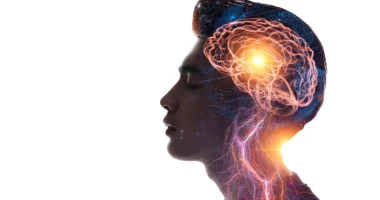Aicardi syndrome is an infrequent condition that mostly happens to girls. It can cause different kinds of problems, like slow learning, epilepsy (which is when someone has seizures), trouble seeing, and sometimes people with it don’t live as long.
This article will help you understand more about Aicardi syndrome, like what might make someone more likely to have it, what signs to look for, and ways to help manage it.
About
Aicardi syndrome is a very uncommon condition, and it mostly affects girls. It’s so rare that only a few boys have been reported to have it by doctors.
Aicardi syndrome is also known as agenesis of the corpus callosum, or ACC. This means that the part of the brain called the corpus callosum doesn’t develop as it should.
Doctors believe that Aicardi syndrome starts when a baby is still growing in the mother’s belly. Sometimes, there’s a change in the DNA of more than one gene during this time, which can lead to the syndrome.
Unlike some other conditions, Aicardi syndrome isn’t something that gets passed down from parents to their children. It happens randomly, even in families with no history of the syndrome.
Doctors usually figure out if a baby has Aicardi syndrome when they’re very young, often because the baby has seizures known as infantile spasms.
Kids with Aicardi syndrome might have trouble learning things and might not develop as quickly as other kids. They could also have trouble seeing or even be blind. Sadly, they might not live as long as other people.
Causes and Frequency
Aicardi syndrome is extremely rare. In the United States, it happens in only about 1 out of every 105,000 to 167,000 babies. Worldwide, there are probably around 4,000 people with this condition, most of whom are girls.
Scientists think that Aicardi syndrome is caused by changes (mutations) in genes that happen when a baby is just starting to form in the mother’s womb. One important change might involve the X chromosomes.
Girls have two X chromosomes, while boys have only one. If a girl has a mutation in one X chromosome, her other healthy X chromosome can help her survive. But if a boy has a mutation in his single X chromosome, it is unlikely he will survive. This is why almost all babies born with Aicardi syndrome are girls.
However, there have been very rare cases of boys with Aicardi syndrome. Some of these boys have an extra X chromosome, which might help them survive despite the mutation.
There is also a possibility that a mutation on chromosome 11 by the TEAD1 could be responsible for some cases of Aicardi syndrome in both boys and girls.
Scientists are still studying these ideas to fully understand what causes Aicardi syndrome.
Diagnosis
The first sign of Aicardi syndrome is usually infantile spasms. These are seizures where the whole body jerks suddenly. These spasms frequently start before the baby is 3 months old and can happen several times a day.
Before diagnosing Aicardi syndrome, doctors are required to perform tests to make sure the symptoms aren’t caused by other conditions like:
- Epilepsy
- Developmental delays
- Eye problems affecting the retina (the back part of the eye)
- Problems with the corpus callosum (the part of the brain that connects the two halves)
Children with Aicardi syndrome typically have delays in development and learning difficulties. They also often have epilepsy, and one study found that children with more severe epilepsy had more significant problems with thinking and memory.
Symptoms
Some individuals with Aicardi syndrome have milder symptoms and might not be diagnosed until they are adults.
To diagnose Aicardi syndrome, doctors often use an MRI scan to look for specific brain changes, such as:
- Uneven development between the two sides of the brain
- Cysts
- Fewer and Smaller brain folds and grooves
- Enlarged ventricles (fluid-filled spaces near the center of the brain)
- Microcephaly (an abnormally small head)
Individuals with Aicardi syndrome frequently have chorioretinal lacunae, which are,whitish-yellow and round spots in the retina. An eye doctor can see these spots using a special tool called an ophthalmoscope.
Other eye issues may include:
- Small or underdeveloped eyes (microphthalmia)
- Gaps or holes in the optic nerve (coloboma)
These eye problems can lead to partial vision loss or blindness.
People with Aicardi syndrome may also have distinctive facial features and other characteristics, such as:
- A flat nose
- A short distance between the nose and upper lip (philtrum)
- An asymmetrical face
- Large ears
- Sparse eyebrows
- Unusual hand shapes
- Scoliosis (curved spine)
- Palate and cleft lip
Other health issues related to Aicardi syndrome include:
- Eating difficulties
- Acid reflux
- Digestive problems
- Diarrhea or Constipation
Management
Aicardi syndrome affects each person differently, so the treatments can vary a lot too.
The main goal of treatment is to handle the symptoms, and doctors create a plan that fits each person’s unique needs.
For seizures, treatments aim to make them happen less often and be less severe. This can involve medications and sometimes other therapies.
In addition to controlling seizures, other therapies can help with developmental delays and vision problems. These therapies include:
- Physical Therapy: Helps improve movement and coordination.
- Speech Therapy: Helps with speaking and communication skills.
- Occupational Therapy: Helps with everyday activities and skills, like eating and dressing.
Each of these therapies is designed to help people with Aicardi syndrome live as independently and comfortably as possible.
Support
Living with a rare disease like Aicardi syndrome, or caring for someone who has it, can be very challenging. It can make people feel alone and isolated.
Support groups are important because they provide a place where people can share their experiences and talk with others who are going through similar situations.
Here are some helpful groups for people with Aicardi syndrome and their families:
- Corpal: A support charity and group in the United Kingdom, inherited by families with Aicardi syndrome.
- The Aicardi Syndrome Foundation: A nonprofit organization in the United States that raises funds for research and spreads awareness about Aicardi syndrome.
Summary
Aicardi syndrome is an infrequent condition that mainly affects girls. It can leads to seizures, vision difficulties, and other signs.
Experts believe that Aicardi syndrome is caused by genetic mutations that happen very early in pregnancy. It is not inherited from parents.
There is no cure for Aicardi syndrome, so treatment focuses on managing the symptoms to improve the quality of life for those affected.








